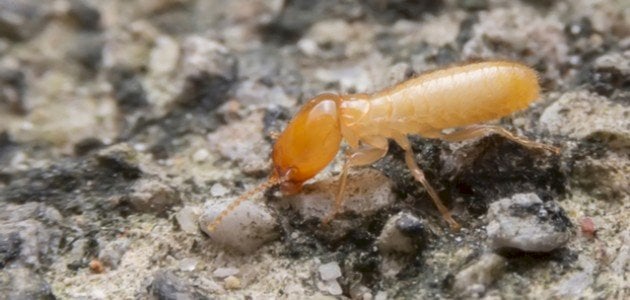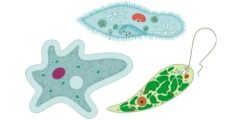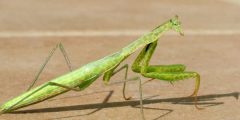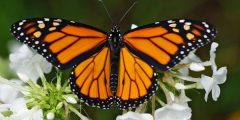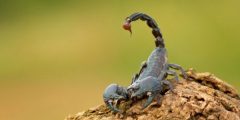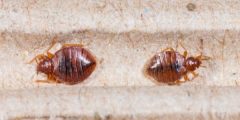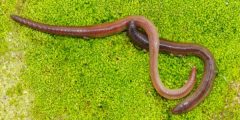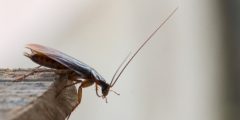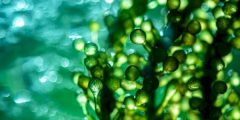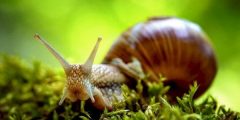The White Termite
Termites are known as a group of cellulose-eating insects. They are also referred to as “termites” because they do not belong to the regular ant family, although their social system is similar to that of ants and bees.
Scientists believe that the class of termites is closer to the class of cockroaches than to ordinary ants, and that is why termites are classified into the Dictyoptera family.
Morphological characteristics of termites
Termites can be distinguished from other types of insects by paying attention to their body composition, as they are distinguished by several things, including the following:
- Termites have a rectangular body, as they do not have any waist in the center of their body.
- Termites have straight antennae.
- Termites have wings of equal shape and size, and their wings are longer than their bodies.
- Termites are white, beige, or sometimes brown in color.
Types of termites
There are many types of ants, reaching 2750 different types, and these types are divided into three main sections, noting that all types of termites cause damage to human property and homes in one way or another, and because some types of termites are more voracious than others, it was necessary to know Types of ants, in order to know how to get rid of them if they exist.
Read also:Types of harmful insects
These types are divided as follows:
Subterranean Termites
It belongs to the Rhinotermitidae group, and these species live in the soil, where they build nests with channels connected to food sources such as trees and houses.
Drywood Termites
These types of ants live in dead trees, dry structural wood, and hardwood floors. They do not live underground at all like subterranean termites. They are smaller than the latter, and usually cause less damage.
Wet termites (Dampwood Termites)
This type of termite lives in wood with high moisture content, and is rarely found in soil or in homes.
Termite habitat
Termites are widely distributed, especially in tropical rainforests around the world, where they are found in North America, especially in Vancouver and Colombia. They are also found on the Pacific coast, eastern Canada, the Atlantic coast, many European countries, and Korea. South, North Japan, South Africa, Australia, New Zealand, and many other countries.
Termite food
Types of termite food
Cellulose
Termites feed mainly on cellulose found in grasses, leaves, and dung of herbivorous animals, or materials of cardboard origin, such as cardboard and cotton. Termites, whether underground or above ground, also feed on good, or partially decomposed, wood.
Read also:Why is it called the praying mantis?
Straw and humus
Other types of termites, such as harvesters, feed on straw, and some other types, such as moisture eaters, feed on humus only. Humus is the organic matter resulting from the decomposition of plants or dead animal materials. This decomposition produces many nutrients that benefit the soil, which constitute one of the types of food for termites.
fungi
Fungi found in old, rotting wood are another type of food for termites. They need something to provide them with vitamins, nitrogen, and some other minerals, which is exactly what they find in these fungi, and they are usually digested by termites more easily than cellulose.
Termites also build fungal gardens using feces containing a certain type of carbohydrate, as this feces can be reused and shaped. This means that termites do not rely only on fungi resulting from rotting materials, but rather build their own fungal colonies and feed from them. It provides it with nitrogen, which it cannot obtain from other fungi.
Method of feeding termites
It is worth noting that termites do not eat food directly; They cannot feed themselves. Rather, workers or adult insects (nymphs) feed first, and then these groups transmit food to the rest of the colony through the mouth in the form of regurgitated and chewed food.
Read also:A single-celled organism
Termites feed in another way known as: By anal feeding, which only occurs among termites located underground, as they empty a fluid from the back intestine (i.e. from the anus), and are licked by other insects of the same species.
Termite behavior
Ant behavior is organized behavior, as this colony consists of a king and queen, workers, adult insects, and many ranks, each of which has a special function and specific characteristics, and they all work together to achieve the benefit of the colony.
Communication
Communication in the life of termites expresses a lot of information, and is through the formation of vibrations or specific chemical signals, such as the secretion of a scent. Below are the most prominent goals of communication between them:
- Alert to the presence of food
When termites find food sources, they leave deposits of fecal matter or pheromones (chemicals) secreted from within themselves as a search trail that extends from the nest to the food source, and this odor is detected by the rest of the termites using olfactory receptors.
- Warning of danger
When sensing danger, termites begin to transmit alarms through vibrations, smell, and physical contact. They may run in a zigzag manner, tremble, or collide with other individuals. Each individual senses these alarms through vibratory receptors.
When disturbed ants collide with other ants, they leave a food trail-like pheromone trail; Therefore, workers prepare for any emergency.
- Other types of communication
Communication can be to determine the way, to reproduce, or other.
Colonies
Termites usually live in collective colonies underground, where life in these colonies is divided into three basic layers, which are as follows:
- Working class
They are characterized by being invisible, and this category lives for about five years, in addition to being characterized by having yellow heads and large jaws, and the length of the worker ant is about 0.63 cm.
- Soldier class
It is distinguished by the fact that it has fewer workers, and its primary function is to protect the colony in the event of an external attack, as the soldiers use their jaws for defense.
- Queens and kings
It is characterized by a dark brown or black color, and has two pairs of transparent wings of equal length. This layer is the only one responsible for reproduction in the colony.
